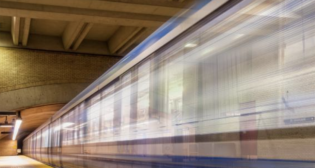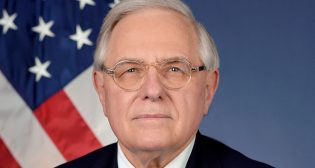
Amtrak eyes new cross-Hudson rail tunnel plan
Written by Douglas John BowenNew Jersey’s two U.S. Senators joined Amtrak President Joseph Boardman Monday in Newark, N.J. to advance a plan, this time led by Amtrak and dubbed the “Gateway Tunnel,” to increase capacity on the Northeast Corridor under the Hudson River.
Citing President Obama’s commitment to U.S. high speed rail efforts, the senators and Amtrak painted the project as compatible with “A Vision for High-Speed Rail in the Northeast Corridor,” released by Amtrak last September. Observed Menendez, “It fits right in with the President’s call” for more passenger rail, particularly HSR. Added Amtrak’s Boardman, “Penn Station is one of the biggest bottlenecks on the Northeast Corridor.”
Cautioned Lautenberg, “Amtrak can’t do this alone. New York will have to be a partner, and I expect the Port Authority [of New York & New Jersey] to be a partner as well.”
Unlike New Jersey Transit’s Access to the Region’s Core (ARC) project, terminated last October by Gov. Chris Christie, the Amtrak-led effort would direct two additional tracks, and two tunnels, to directly serve Pennsylvania Station in Manhattan, including the Moynihan Station project, an expansion of the station complex eyed as Amtrak’s new home.
Lautenberg noted that at least part of the proposal being advanced preceded ARC’s demise last October. Amtrak had planned to build its own tunnel under the Hudson River after the ARC tunnel was completed, he said. But ARC’s demise made extra trans-Hudson capacity even more urgent, he said. “I urge Amtrak to step in. We have to act now,” the senator said.
The Amtrak plan does not envision any connection to Grand Central Terminal—a component of the original ARC plan advanced in 1993—but instead would add capacity at Penn Station for Amtrak, NJ Transit, Metro-North, and even (marginally) the Long Island Rail Road.

Queried aggressively by the assembled press Monday, Amtrak’s Boardman said the cost estimate for Amtrak’s proposal was $13.5 billion. ARC’s original cost was estimated at roughly $5 billion during the 1990s, and officially reached between $8.9 billion and $9.1 billion by last year, when Gov. Christie, voicing concerns over even higher potential costs, all to be covered by New Jersey, terminated the project.
With several questioners expressing skepticism over fiscal support for the new plan—more than one cited Gov. Christie’s complaint that ARC was not fiscally supported by either New York State or New York City—Boardman asserted, “I expect to see New York at the table.” Further, he said, “We expect there’ll be private investment in this project,” in essence making it a public/private partnership of some sort.
Asked if New Jersey Gov. Christie had been contacted, Lautenberg replied, “I’m sure we’ll hear from him.” Both Lautenberg and Menendez added that they planned to meet with New Jersey’s House delegation “next week.”
Though each speaker spoke in terms of aiding New Jersey “commuters,” Lautenberg also emphasized the plan’s strength in “allowing folks in New York, and other points, such as Connecticut, to access [New York City].” He added, “This [plan] has Moynihan Station.” ARC, by contrast, envisioned a stub-end station linked by walkway to the existing Penn Station complex.
“Gateway Tunnel” would allow 21 more trains per hour under the Hudson River to (or from) NewYork. ARC, even in its latter stage, promised 25 trains per hour, virtually all of them New JerseyTransit trains. Menendez, acknowledging this, also noted regional connectivity, saying the Amtrak plan offers “more NJ Transit capacity, though not as much [as ARC itself did], and it has more of a regional approach.”
Asked if Amtrak’s current plan was in fact one alternative rejected by NJ Transit in its ARC proposal, Boardman said, “I don’t know what the old plan was, in detail, but this is a better plan.” Later during the conference, however, he volunteered, “I didn’t like the NJ Transit plan when I was Federal Railroad Administrator,” and reiterated his belief that Amtrak’s plan was an improvement.
The NEC currently handles 260 million rail riders per year from Amtrak and regional rail operators, Boardman said, and the number is expected to rise to 430 million by 2030. “Penn Station and Moynihan [Station] are key to the next 100 years,” he said. “And we’re late. We’re late already.”



